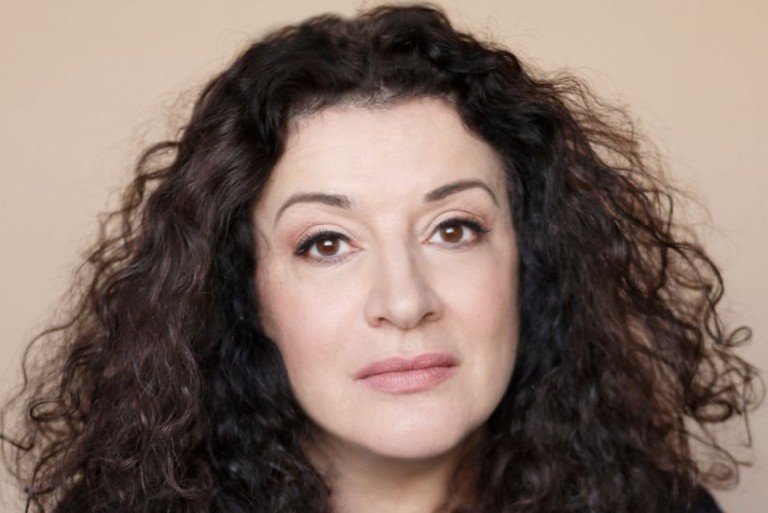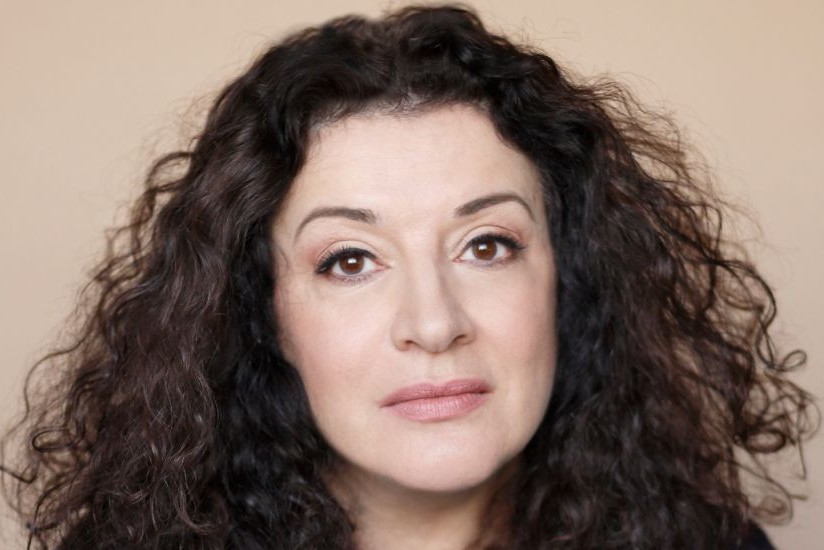 Janna Gur is the founder and editor of Al Hashulchan (literally, “On the Table”), a leading Israeli food and wine magazine, and author of “The Book of New Israeli Food: A Culinary Journey” (Schocken Books), at once a cookbook, a beautifully photographed coffee table book and a fascinating culinary history lesson on the diverse cuisine of Israel. I had the pleasure of interviewing her when her book tour brought her to Los Angeles.
Janna Gur is the founder and editor of Al Hashulchan (literally, “On the Table”), a leading Israeli food and wine magazine, and author of “The Book of New Israeli Food: A Culinary Journey” (Schocken Books), at once a cookbook, a beautifully photographed coffee table book and a fascinating culinary history lesson on the diverse cuisine of Israel. I had the pleasure of interviewing her when her book tour brought her to Los Angeles.
Q. YOU TALK ABOUT SO MANY INFLUENCES ON THE FOOD OF ISRAEL, BUT IS THERE REALLY SUCH A THING AS ISRAELI CUISINE?
A. Well, there’s definitely such a thing as Israeli food! And it’s not just a mixture of a little Middle Eastern and maybe some American or Italian. There is a unique style that started to evolve during recent decades, but it’s too early to call it a full-fledged cuisine, as in Chinese or Italian. Some people say there are only three great cuisines: French, Italian and Chinese, and everything else is an imitation. We are ages away from becoming a cuisine, but our dishes are composed of fresh, bold flavors and flavor combinations that speak Hebrew: lots of vegetables, lots of spices that are not necessarily hot, olive oil, burned eggplant, grilled meat – lamb rather than beef, or chicken – whole grilled fish.
Q. AS WAVES OF IMMIGRANTS HAVE SETTLED IN AT DIFFERENT PERIODS IN ISRAEL’S HISTORY, HAS ISRAELI FOOD BECOME MORE HOMOGENEOUS, OR HAVE THE INDIVIDUAL ETHNIC CUISINES REMAINED DISTINCT?
A. In the beginning everybody kept to himself or herself. There were vegetables that only Bulgarian Jews or Moroccan Jews would buy, and Ashkenazi Jews would never touch them. Today there are so many cross-marriages that the combination of ethnic origins happens on the table as well. The food is not homogenous as much as it is a mixture that is the norm.
On Passover we documented in the magazine a family from Jerusalem. The mother is Persian, a younger sister married a Moroccan, and she brought spiced fish. She also made gefilte fish that she learned from a neighbor, but changed the recipe because she didn’t like sugar. Her daughter-in-law is Argentinean and made chicken soup, but it was a little different from the classic. One of the sons was dating a young girl from Libya…so what is typical is a mixture, even inside one plate. Chicken soup is not the classic version, but is influenced by North African couscous soup or Romanian chicken soup.
Q. DO YOU SEE THIS MIXTURE IN THE RESTAURANTS AS WELL?
A. We have more and more the influence of Mizrahi cuisine. There was a big wave of immigration from North Africa in the fifties, and a kind of snobbery developed from the Ashkenazim. Mizrahi food was considered at the time fit for very simple family-style restaurants, not for fine dining. Today the menus in almost all of the leading Israeli restaurants reflect some kind of fusion combining Mizrahi food, Jewish ethnic food and Middle Eastern. Of the ten best restaurants in Israel only one is French. The others serve a creative mixture of Jewish Israeli foods.
Israel has some world class restaurants. It’s very interesting – it emerged when the chefs stopped looking for inspiration in France and Italy, but looked instead to their immediate surroundings, our vegetables, our wild herbs. Food is very much influenced by the climate, the sunlight and the temperament of the people. That’s the food Israelis like the most. Every time I come back from my travels, I have even a higher opinion in terms of what we have to offer.
Q. WHAT IS THIS MYSTIQUE ABOUT THE ISRAELI SALAD? HOW DID IT DEVELOP?
A. Nobody else in the world eats salad for breakfast. It started in the kibbutz. Nobody was preparing the food for them. They just put vegetables on the table, and people would cut up the salad themselves. The way it is consumed is unique. We have it for breakfast, lunch and dinner, stuffed in a pita – it’s like a basic thing, like a default, like, say, French fries here.
Q. LET’S TALK ABOUT SOME OF THE MORE IMPORTANT LOCAL INGREDIENTS. YOU DEVOTE A WHOLE CHAPTER TO CHEESE.
A. Israel has great fresh cheese. We’ve always had great cottage cheese, for instance, but the production of hard cheeses is quite new; it started in the eighties. The bulk of cheeses are still commercially processed, but we also have great artisanal cheese, especially goat cheese and sheep cheese. There are 30 boutique dairy farms in Israel now.
Q. AND OF COURSE, OLIVE OIL – YOU CALL IT “THE SOUL OF THE MEDITERRANEAN.”
A. Interestingly, 30 years ago we didn’t use that much olive oil. Most Ashkenazi Jews didn’t use it in cooking. Only in the mid eighties did olive oil become popular in cooking. Now it is so in demand that we actually have to import olive oil into Israel!
Q. YOU ALSO DEVOTE A WHOLE CHAPTER TO EGGPLANT.
A. We call it the king of vegetables. It’s usually flame broiled. There are certain dishes that are fashionable right now based on burned eggplant, like eggplant carpaccio.
Q. YOU SAY THE MAJORITY OF ISRAELIS CALL HUMMUS THEIR FAVORITE FOOD. WHY IS IT SO SPECIAL?
A. Hummus wasn’t invented by Israelis, but belongs to the region. You find it in Lebanon, Syria – all the famous hummus places in Israel are owned by Arabs, but Israelis became infatuated with hummus quite early, in the thirties, and it is the most beloved food of Israelis. We write books about hummus. We write guides about hummus. It is like a religion in Israel.
Judy Bart Kancigor is the author of “Cooking Jewish: 532 Great Recipes from the Rabinowitz Family” and can be found on the web at www.cookingjewish.com.
